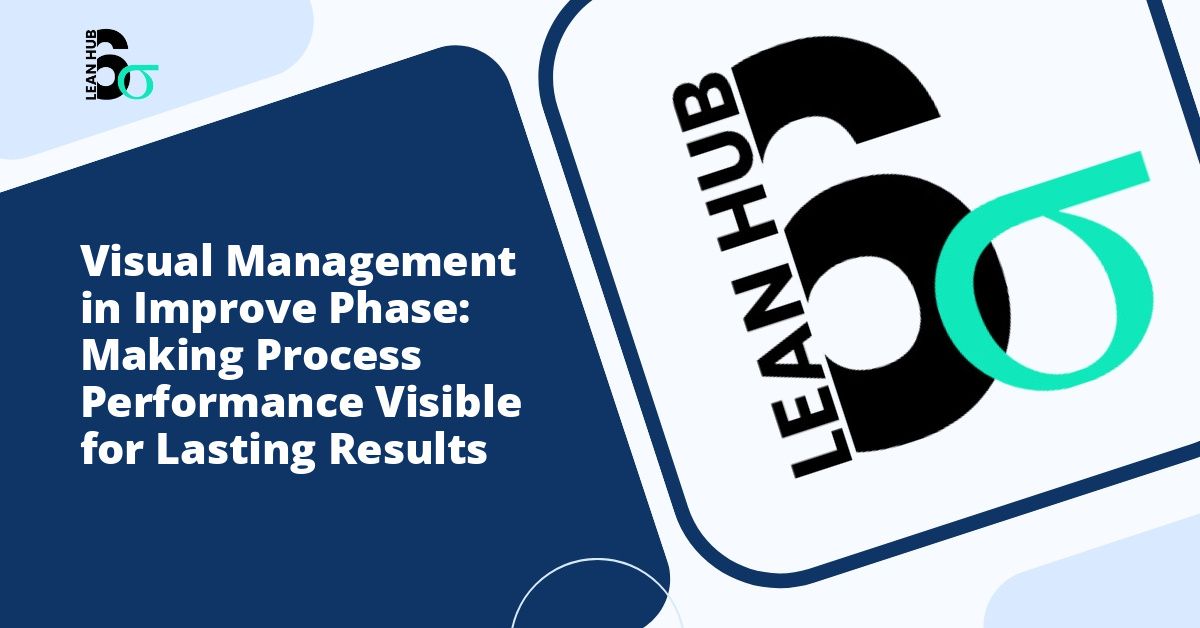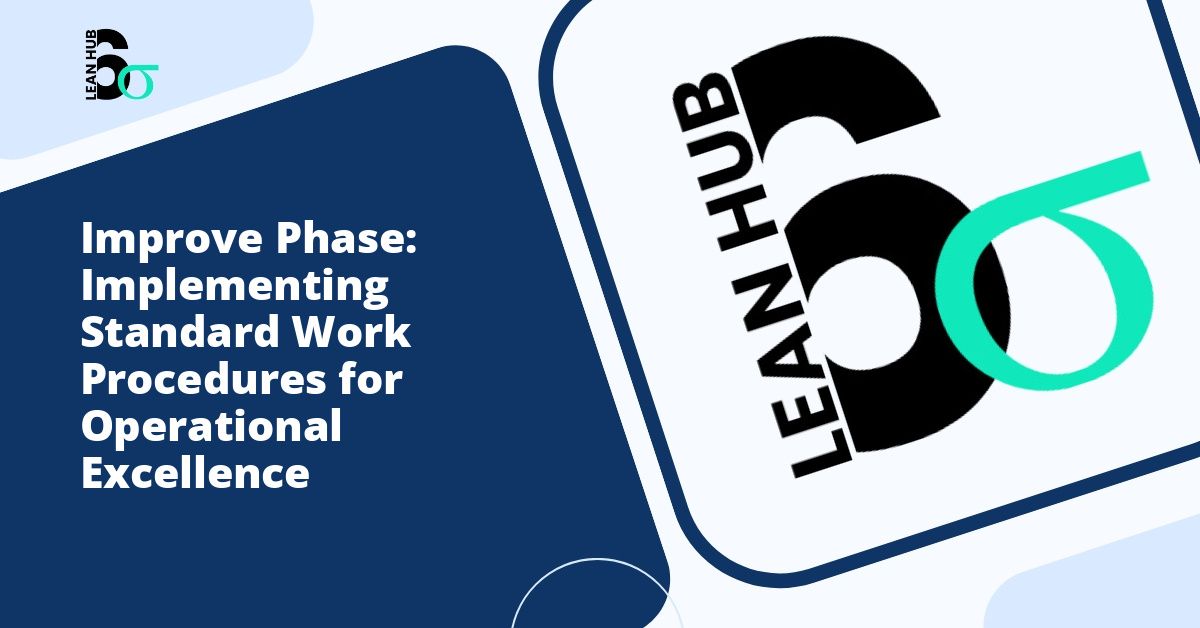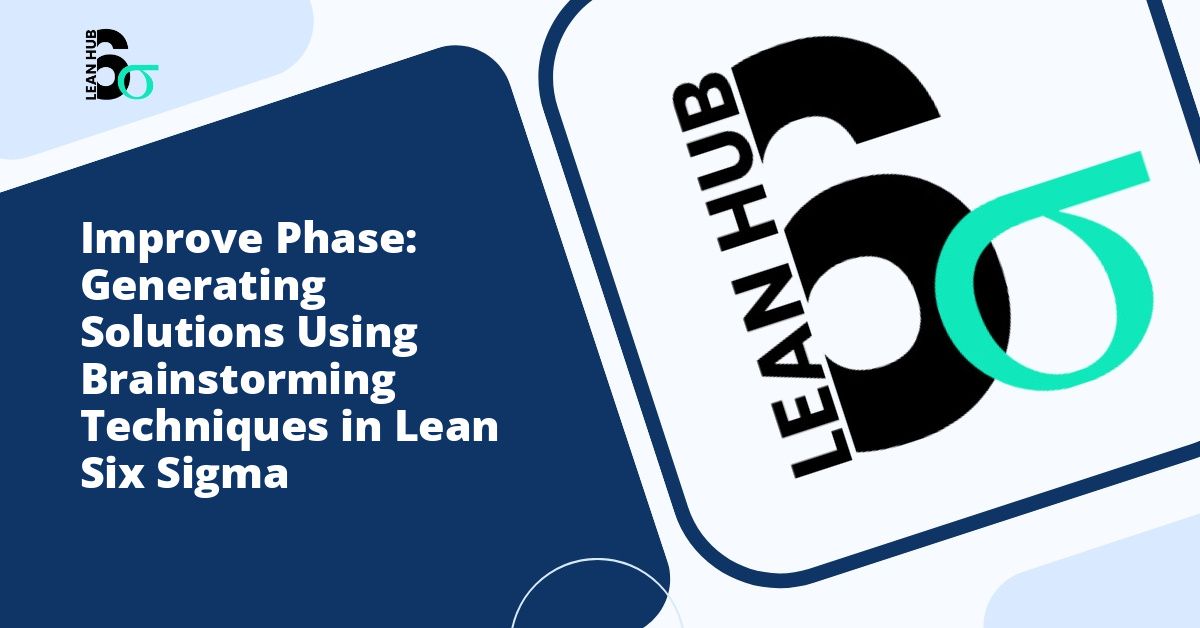In today’s competitive business environment, organizations continuously seek methods to enhance their operational efficiency and deliver superior value to customers. Visual management stands as a powerful tool within the Improve Phase of process improvement methodologies, transforming abstract data into actionable insights that drive meaningful change. This approach creates transparency, fosters accountability, and enables teams to recognize opportunities for enhancement at a glance.
Understanding Visual Management in Process Improvement
Visual management refers to the strategic use of visual tools, displays, and indicators to communicate information quickly and effectively across an organization. Within the context of process improvement frameworks like lean six sigma, visual management serves as the bridge between complex analytical findings and practical implementation. It transforms numbers, charts, and process metrics into easily digestible formats that anyone in the organization can understand and act upon. You might also enjoy reading about How to Conduct a DOE Study: Step-by-Step Guide for Six Sigma Projects.
The fundamental principle behind visual management is simple yet profound: what gets measured and displayed gets improved. When process performance becomes visible to everyone involved, it creates a shared understanding of current conditions, targets, and gaps that need addressing. This transparency eliminates ambiguity and ensures that all team members work toward common objectives with clarity and purpose. You might also enjoy reading about How to Write Standard Operating Procedures for Your Improved Process: A Complete Guide.
The Role of Visual Management in the Improve Phase
The Improve Phase represents a critical juncture in any process improvement initiative. After identifying problems, measuring current performance, and analyzing root causes, organizations must implement solutions that generate sustainable results. Visual management plays an instrumental role during this phase by: You might also enjoy reading about Design of Experiments Explained: Testing Multiple Variables Simultaneously for Better Results.
- Providing real-time feedback on improvement initiatives
- Highlighting deviations from expected performance immediately
- Maintaining team focus on improvement goals
- Facilitating quick decision-making based on current data
- Creating accountability through transparent performance tracking
- Encouraging continuous engagement with improvement efforts
During the recognize phase of implementation, visual management helps teams identify patterns, celebrate small wins, and spot emerging issues before they escalate. This proactive approach ensures that improvements remain on track and deliver the intended benefits.
Essential Visual Management Tools for Process Performance
Performance Dashboards
Performance dashboards consolidate key metrics into a single, accessible display that provides a comprehensive view of process health. These dashboards typically include visual representations such as graphs, gauges, and trend lines that illustrate whether processes are performing within acceptable parameters. Effective dashboards balance detail with clarity, presenting enough information to inform decisions without overwhelming viewers with excessive data.
Visual Control Boards
Visual control boards serve as centralized communication hubs where teams gather to review progress, discuss challenges, and coordinate actions. These boards display current status against targets, highlight problems requiring attention, and track action items through completion. The physical presence of these boards in work areas keeps improvement initiatives visible and top of mind for all team members.
Standard Work Documentation
Visual standard work documentation uses pictures, diagrams, and simplified instructions to communicate the best-known method for completing tasks. This approach reduces variation, facilitates training, and establishes baselines against which improvements can be measured. When standard work is displayed at the point of use, it serves as a constant reference that reinforces proper procedures.
Andon Systems
Andon systems provide immediate visual and sometimes auditory signals when problems occur in processes. These alerts enable rapid response to issues, preventing minor problems from cascading into major disruptions. In the Improve Phase, andon systems help teams monitor whether implemented solutions effectively prevent the recurrence of previously identified problems.
Value Stream Maps
Visual representations of value streams illustrate the flow of materials, information, and activities required to deliver products or services to customers. During the Improve Phase, updated value stream maps display proposed changes and their expected impact on flow, lead time, and waste elimination. These maps help stakeholders visualize the future state and understand how specific improvements contribute to overall process enhancement.
Implementing Visual Management for Maximum Impact
Successful implementation of visual management requires thoughtful planning and execution. Organizations should consider the following principles when establishing visual management systems:
Simplicity and Clarity
Visual tools must communicate information quickly and unambiguously. Overly complex displays defeat the purpose of visual management by requiring extensive interpretation. The most effective visual management tools can be understood within seconds, enabling immediate comprehension and action.
Relevance and Timeliness
Displayed information must be current, accurate, and relevant to the audience viewing it. Outdated or irrelevant data erodes trust in visual management systems and diminishes their effectiveness. Organizations must establish processes to ensure that visual displays reflect the latest information and address the concerns most important to process stakeholders.
Accessibility and Visibility
Visual management tools should be positioned where they can be easily seen by those who need the information. Physical boards belong in high-traffic areas or at points where decisions are made. Digital dashboards should be readily accessible through commonly used systems and devices. The principle of accessibility extends beyond physical placement to include ensuring that visual displays are understandable to all intended audiences, regardless of their technical expertise.
Action Orientation
Effective visual management does more than display information; it prompts action. Visual tools should clearly indicate when performance deviates from targets and point toward necessary responses. Color coding, threshold markers, and status indicators help viewers quickly identify what requires attention and the urgency level of needed actions.
Benefits of Visual Management in Lean Six Sigma Initiatives
Organizations that effectively implement visual management within their lean six sigma improvement efforts realize numerous benefits. These advantages extend beyond the immediate improvement project to create lasting organizational capabilities.
First, visual management accelerates the learning curve for team members. When process performance is continuously visible, individuals develop deeper understanding of how their actions influence outcomes. This heightened awareness fosters a culture of ownership and continuous improvement that persists beyond formal improvement initiatives.
Second, visual management enables faster problem resolution. When issues become immediately apparent through visual signals, teams can respond quickly before problems compound. This responsiveness reduces the cost and disruption associated with process failures and demonstrates the value of improvement efforts to stakeholders.
Third, visual management strengthens accountability throughout the organization. When performance is transparent, individuals and teams understand their contributions to overall results. This clarity motivates consistent effort and helps maintain momentum during the challenging middle stages of improvement projects.
Sustaining Visual Management Beyond Implementation
The true test of visual management effectiveness comes after initial implementation, during the sustain phase of improvement work. Organizations must guard against allowing visual management systems to become static displays that lose relevance over time. Regular reviews should assess whether displayed information remains valuable, whether formats effectively communicate key messages, and whether the visual management system evolves alongside changing business needs.
Leadership commitment proves essential for sustaining visual management practices. When leaders regularly reference visual displays, ask questions about displayed information, and use visuals to guide decisions, they signal the importance of these tools to the broader organization. This leadership behavior reinforces the value of visual management and encourages continued engagement at all levels.
Conclusion
Visual management transforms the Improve Phase from an abstract exercise in data analysis into a tangible, engaging process that involves entire organizations in the pursuit of excellence. By making process performance visible, organizations create the transparency, accountability, and shared understanding necessary for sustainable improvement. Whether through dashboards, control boards, or other visual tools, the practice of making performance visible accelerates progress, facilitates learning, and builds the foundation for continuous enhancement of organizational capabilities. As businesses continue to navigate increasingly complex operational environments, visual management will remain an indispensable tool for those committed to operational excellence through structured improvement methodologies.








